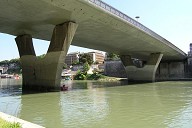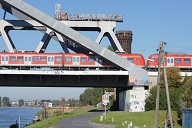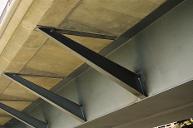First bridge built using VFT-Rail girders
Only 50 hours of closure time were available to replace the two old, 140-year-old steel troughs with a modern bridge structure on the 3511 rail line from Neunkirchen to Bingerbrück. Since the end of October 2011, two VFT Rail girders - the first of their kind - now span the 12.75 meters over the Simmerbach. The pier head and abutment benches were also renewed.
The new VFT-Rail girder was developed by SSF Ingenieure together with DB AG. In December 2010, the girder received operating approval from the Federal Railway Authority. This was based on a design concept that was validated by an extensive test program in cooperation with the Chair of Metal Construction at the Technical University of Munich (Prof. Dr.-Ing. Dipl. Wirt.-Ing. (NDS) Martin Mensinger).
The VFT-Rail girder is a steel-concrete composite girder. It is reinforced on the top with four light T-sections and on the bottom with four heavy T-sections, which are connected to the concrete cross-section by means of composite dowels. The rail is fixed directly to the structural concrete in a 23 cm deep channel. As a result, the girder achieves a total design height of 0.66 m, while the effective design height - from the bottom edge of the rail to the bottom edge of the girder - is only 0.44 m. The girder is thus extremely slim. The girder is thus extremely slim. The ratio of span to design height is then also called 'slenderness' and is 1/29 for the bridge over the Simmerbach.
The steel girders were rolled and provided with corrosion protection in Esch-sur-Alzette (Luxembourg) by the Arcelor/ Mittal company. From there, the transport went to Saxony. TWT/BBL concreted the composite girders in negative position in order to achieve optimum quality of the rail channel and the necessary precise position of the rail support points. The transport to Martinstein took place in two nights. The prefabricated parts of the support benches and the pier head (BeckBau, Eschwege) arrived at the construction site simultaneously at around 5:30 in the morning. The track and the old superstructures - the steel troughs that were around 140 years old - had already been removed by this time, and the original pier head and abutment benches demolished. After the new elastomeric bearings were installed on the girders, the new abutment benches were set, then first one, then the other 65-ton VFT Rail girder was lifted into place. Around 2 p.m. on Sunday, track construction began and was completed around 1 a.m. on Monday morning. As early as 4:30 a.m., the first trains were again rolling over the new bridge over the Simmerbach.
References
Relevant Websites
- About this
data sheet - Product-ID
4486 - Published on:
30/04/2012 - Last updated on:
24/01/2022

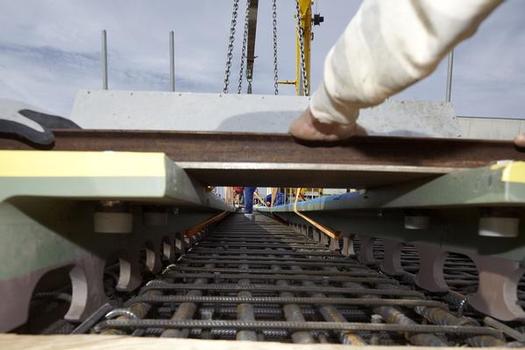
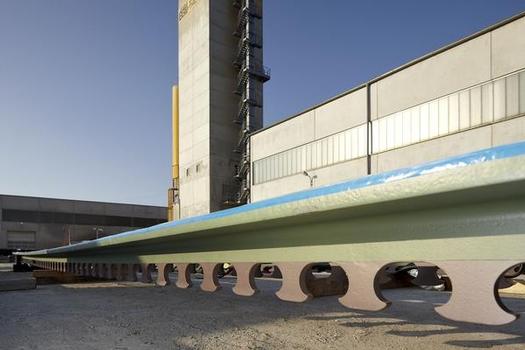
 SSF Ingenieure AG
SSF Ingenieure AG
